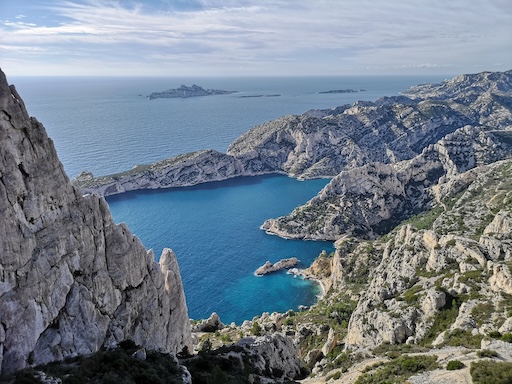
On the sun-scorched southern coast of France, wedged between the bustle of Marseille and the calm of Cassis, lies a slice of wilderness that looks like it leapt out of a Mediterranean dream. Welcome to Parc National des Calanques, a national park where jagged limestone cliffs plunge into turquoise coves so clear, they look Photoshopped.
This isn’t your typical national park. There are no fences, no wide asphalt roads, and definitely no vending machines. Just raw nature, wind-sculpted rock, and secret inlets that reward the curious and the slightly sunburned.
What Exactly is a Calanque?
Think of a calanque as a kind of mini-fjord—narrow, steep-sided valleys carved into the limestone coast and partially submerged by the sea. They form hidden inlets, many of which can only be accessed by foot, kayak, or a bold jump from a boat.
The most famous ones—Calanque de Sormiou, Calanque d’En-Vau, and Calanque de Port-Miou—are all wildly different. Some offer pebbled beaches perfect for swimming. Others feel like secret amphitheaters sculpted by nature.

A Hiker’s Paradise
If you're a hiker, this is heaven—just remember to bring sunscreen, water, and a bit of grit. Trails crisscross the cliffs, leading you past gnarled pine trees and crumbling viewpoints. The landscape changes constantly: blazing sun on one side, shaded canyons on the other, and always, always that piercing blue sea down below.
The path to Calanque d’En-Vau is one of the most popular and also one of the most rewarding. After a steep, rocky descent, you’re greeted with a narrow cove framed by white cliffs and green water that begs you to dive in.
And yes, the way back up is brutal—but every step feels earned.
Adventures by Sea
Not a fan of hiking in the heat? No worries. You can explore the Calanques by kayak, paddleboard, or boat tour. Gliding through narrow passages, discovering caves, and snorkeling in hidden pockets of sea life—it’s like nature designed a playground for adventurers.
Kayaking offers a slower, quieter way to see the cliffs from below. You might spot falcons overhead or fish darting below. Some people even bring a baguette and wine and turn their kayak into a floating picnic.
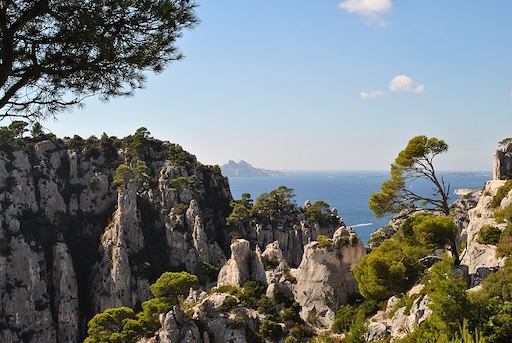
Wild and Protected
Parc National des Calanques is one of only a few national parks in Europe that includes both land and sea. It’s home to rare plants, seabirds, and fragile marine ecosystems—so don’t touch the coral, pack out your trash, and stay on trails.
Swimming and sunbathing are encouraged, but respecting the wildness is part of the deal. And if you’re lucky, you might spot dolphins offshore or stumble on a fossil embedded in the rock—because this place has been around for a very long time.
Between Two Worlds: Marseille and Cassis
One of the coolest things about the Calanques? Their accessibility. In just 30 minutes, you can go from the gritty street art and bustling port of Marseille to the trailhead of a natural wonderland.
On the eastern end lies Cassis, a postcard-perfect town with pastel facades, wine terraces, and a relaxed pace. From here, boat tours to the calanques are common, and the town itself feels like the Riviera before Instagram discovered it.
Hidden Wonder in Broad Daylight
The Calanques don’t hide in the shadows. They gleam—bright white cliffs against cobalt skies, shimmering waters that reflect every shade of blue. Yet somehow, they still feel like a secret. Maybe it’s the effort it takes to reach them. Or the way silence wraps around you once you’re there.
Whether you hike, paddle, or just find a rock to sit on and breathe it all in, Parc National des Calanques reminds you that sometimes the most beautiful places require a little adventure—and a lot of sunscreen.
Seasons in the Calanques: When to Go
Timing matters when visiting the Calanques. Spring (April to June) is arguably the best season—wildflowers bloom along the trails, the weather is mild, and the coves are still quiet. Summer brings warmer sea temperatures perfect for swimming, but also bigger crowds and trail restrictions due to fire risk.
In July and August, certain paths are closed during high-risk fire days. Always check the official park website before setting out. Autumn offers golden light and solitude, while winter is quiet and hauntingly beautiful—though best reserved for experienced hikers due to slippery terrain and unpredictable weather.
Calanques Legends and Rock Lore
Like many ancient landscapes, the Calanques come with stories. One tale speaks of smugglers who once used these hidden coves to hide contraband, slipping between Marseille and Corsica by night. Another legend says sirens once lured fishermen into the inlets with their songs—explaining the eerie acoustics of the cliffs.
Fossils found embedded in the limestone tell a more scientific story—of a prehistoric sea, long vanished, whose creatures are now frozen in stone. Hikers often stumble upon shell patterns or imprints of coral, reminding us that these cliffs are millions of years in the making.
What to Pack (and What to Expect)
First, leave the flip-flops at home. The rocky trails demand sturdy shoes with grip. Bring a reusable water bottle, a hat, and sunscreen—shade is rare. Swimwear is a must if you're heading to the beachy calanques, along with a towel that dries fast.
Don’t expect cafés or food stalls. The park is raw and wild. Pack snacks, and maybe a baguette-and-cheese lunch with fruit for a proper Provençal picnic. And while cell service is surprisingly decent in some areas, don’t count on it. Download maps in advance.
Most importantly, bring curiosity and a sense of respect. The Calanques aren’t just beautiful—they’re fragile, living ecosystems that deserve gentle exploration.
Share this story and inspire others.
Tags: Calanques National Park, Marseille, limestone cliffs, hidden coves, Mediterranean coast, France hiking, wild beaches
 Nice – Where the Riviera Glitters with Old-World Glamour
Nice – Where the Riviera Glitters with Old-World Glamour
 Verdon Gorge – France’s Grand Canyon of Emerald Waters
Verdon Gorge – France’s Grand Canyon of Emerald Waters
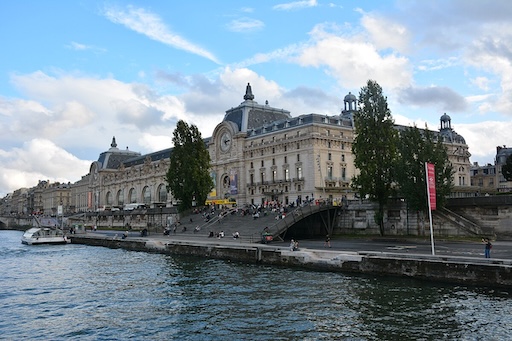 Musée d'Orsay – Where Impressionism Lives in a Former Train Station
Musée d'Orsay – Where Impressionism Lives in a Former Train Station
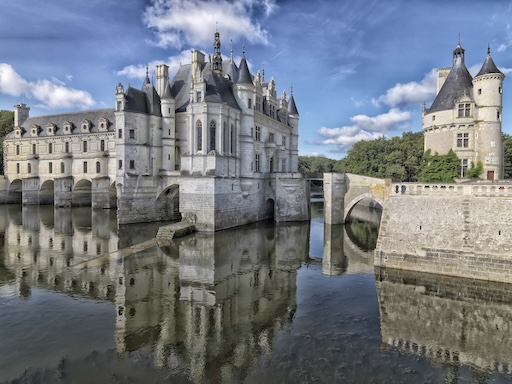 Château de Chenonceau – The Elegant Castle Over the Cher River
Château de Chenonceau – The Elegant Castle Over the Cher River
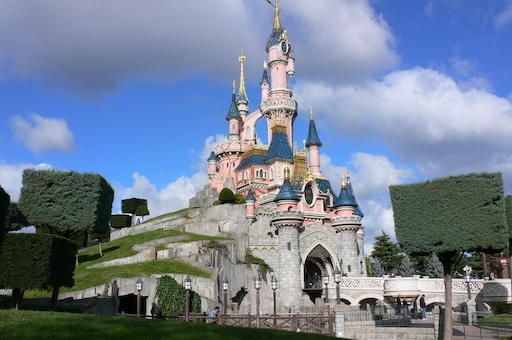 Disneyland Paris – Where Fairy Tales Speak French
Disneyland Paris – Where Fairy Tales Speak French
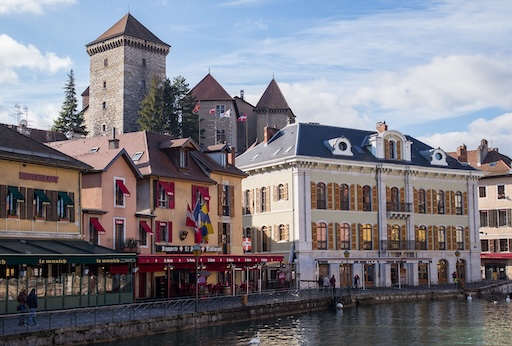 Annecy – The Venice of the Mountains
Annecy – The Venice of the Mountains